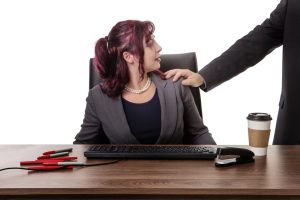
Written by Michael J. Wilson,
Psychosis seldom begins with something dramatic. It starts in fragments. A person forgets small things, loses focus mid-conversation, or seems distant for reasons no one can name. You may not immediately see the crisis. Days pass. The change deepens. Knowing how to spot the signs of emerging psychosis can stop those quiet beginnings from turning into something far harder to treat.
When Stress Stops Explaining It
People get tired, anxious, or overwhelmed. That’s normal. What’s different here is how the feeling sticks. The person stays detached even after the stress fades. They stop finding joy in things that once relaxed them. You notice they answer slowly, or not at all. Maybe they stare through you. Something in their tone feels empty, like the emotion has gone missing.
It’s easy to think they just need sleep. Sometimes they do. But if each week feels stranger than the last, the change is more than stress. Early psychosis often hides inside what looks like ordinary fatigue. They may claim to be fine, though their voice lacks energy. The eyes move differently, darting away or lingering too long. You start doubting your own instincts, then realize something deeper is off.
Even daily routines begin to bend. They forget appointments, skip meals, or stay awake all night. The balance between effort and reward disappears. They may say work feels pointless or claim that time moves more slowly. Such vague but persistent feelings are often the first cracks in perception.
Emotion Begins to Shift
You might see sudden anger or quiet tears with no cause. A friend who used to joke now laughs at the wrong moments. Expressions feel mismatched. The reaction doesn’t fit the event. They might say they feel fine, yet their eyes show confusion. At dinner, conversation fades into silence. Small noises irritate them. Even familiar places start to feel foreign.
Withdrawal follows. Calls go unanswered, meals are skipped, and the room stays dark. Hygiene fades. At first, the family thinks it’s a phase. Then weeks pass, and energy keeps dropping. In this early stage, those emotional breaks and odd silences belong to the signs of emerging psychosis that clinicians warn about.
People close to them start adapting without noticing. They speak more slowly, avoid confrontation, and walk on eggshells. The house feels tense for reasons no one can explain. When fear enters the space, relationships strain. Yet beneath the unease is still the person you know — struggling to hold onto what feels real.
How Emotion Differs from Person to Person
Symptoms do not look identical. Men often have an earlier onset with more negative symptoms, while women may present later with more mood symptoms. Tailor observations to the person in front of you. Understanding these unique emotional experiences helps caregivers see past stereotypes.
Without this context, warning signs get mislabeled. The angry young man becomes “lazy.” The withdrawn woman becomes “too sensitive.” Both risk being ignored. Real understanding means listening to tone, rhythm, and expression, not just words.
Cultural expectations shape reactions, too. Some families discourage open emotion, so silence hides distress. Others interpret unusual experiences as spiritual events rather than mental symptoms. Awareness of these differences improves empathy and accuracy in care.
Thinking Feels Tangled
Thoughts no longer connect the same way. Someone begins to drift mid-sentence or jump from one idea to another. They might describe coincidences as fate or believe a comment on TV is meant for them. At first, it sounds harmless. Then it becomes the only thing they talk about.
It doesn’t always look chaotic. Sometimes it’s subtle signs — a slower pace, a puzzled pause, an answer that doesn’t quite match the question. Teachers notice disorganized writing. Coworkers see missed details. The thread of logic bends until it’s hard to follow.
They may begin writing notes to “remember clues” or deleting old posts online for reasons that make no sense to others. Conversations turn circular. Questions feel like traps. You sense they’re hiding something, but it’s confusion, not deceit.
The World Starts to Look Different
Perception begins to shift before clear hallucinations appear. You might hear someone say, “Did you call me?” when you didn’t. Or they glance behind them as if sensing movement: a shadow, a whisper, a flash — brief, uncertain, yet disturbing.
They may describe colors as sharper, sounds as layered, or time as stretched. These moments fade fast, but they leave fear behind. When they keep returning, the mind may be crossing a boundary between ordinary perception and altered reality. Catching these flickers early makes treatment simpler.
They often try to rationalize it. “Maybe I’m just tired,” they say. But their shoulders tense when a sound repeats, or they check windows before bed. The body reacts before the words admit it. These reactions are early protective instincts. They reveal fear where logic hasn’t yet caught up.
Words and Movements Give It Away
Speech becomes a window. Some people trail off; others repeat words or invent new ones. They might mumble to themselves or talk faster than usual. Small errors appear in grammar or tense, as though speech can’t keep up with thought.
Body language tells the same story. Their gestures may freeze mid-motion. Posture stiffens. Smiles appear at odd times. Eye contact feels either too sharp or missing entirely. None of this proves psychosis alone, but together it draws a clear outline.
When you observe closely, you see tension in stillness — the body bracing for something unseen. The person may start holding objects for comfort or pacing narrow spaces. These acts look meaningless but express a need for control. Psychosis begins where certainty ends.
Alt: a man with a serious expression
Caption: Changes in speech and body language, such as erratic gestures, tense posture, and odd eye contact, signal underlying psychosis, often reflecting a deep need for control and certainty.
Why It Happens More Easily for Some
Family history, unresolved trauma, and isolation each raise the risk. So does drug use, especially cannabis and hallucinogens. Sleep loss often sits at the center. Nights grow longer; the mind begins to blur. After several sleepless weeks, reality bends.
Genetics plays a role, but doesn’t decide fate. A person with family risk might never develop psychosis if their environment stays stable. Stress, poor diet, and sensory overload increase vulnerability. Even constant online stimulation can worsen detachment. The brain starts losing its natural rhythm, caught between wakefulness and dream.
These risks overlap. A teenager juggling pressure, grief, and insomnia stands closer to the edge than most realize. Recognizing that pattern early can prevent hospitalization later.
Acting Before It Escalates
When changes stay for more than a few weeks, act. Talk gently. Ask if things feel strange. Encourage medical evaluation instead of waiting for a crisis. Many hospitals and community clinics offer early psychosis programs focused on therapy, education, and stress control.
Keep a short record of daily behavior — sleep, appetite, mood, communication. Patterns show what a single day hides. Professionals use this information to decide if the symptoms fit an early psychotic phase or something else.
Medication isn’t always first. Therapy and support often come before that. Reducing stress, cutting drugs, and restoring rest can slow the process. Families that learn to stay calm during episodes of confusion often prevent escalation just by maintaining routine.
Why People Miss It
Families fear exaggerating. They wait. They hope. Some blame screens or hormones. Stigma keeps everyone silent. By the time they decide to act, the condition has grown.
The person themselves often denies it. They believe others are overreacting or conspiring. Trust breaks down. That’s why patience counts. Gentle conversation works better than confrontation. Consistency rebuilds a connection where logic cannot.
Communities can help too. Schools and workplaces that teach basic awareness encourage faster response. When more people know what early warning looks like, fewer cases slip through unnoticed.
Support That Truly Helps
The right network changes everything. Families can set routines, ensure rest, and help with appointments. Friends can offer company without judgment. Simple structure — meals at the same time, limited caffeine, quiet evenings — steadies the mind.
Peer support groups also help reduce fear. Talking with others who have lived through similar experiences shows recovery is possible. A supportive environment reduces relapse and improves long-term stability.
Therapists encourage creative expression through journaling, music, or gentle physical activity. These small outlets return a sense of control. Over time, they become tools for grounding and awareness. Healing works best when it restores trust in daily life.
Staying Watchful After Recovery
Early episodes often fade with treatment, but vigilance must remain. Keep monitoring mood, behavior, and sleep. A sudden change may signal relapse. Continued therapy, balanced routines, and honest communication are the strongest protection.
Recovery rarely means returning to the old normal. It builds a new one — steady, informed, and supported. Progress is quiet but real. Each small act of care helps maintain it. Over months, confidence returns. With enough support, the person rediscovers rhythm, laughter, and purpose.
The Final Takeaway
Psychosis doesn’t strike all at once. It whispers. You notice strange pauses, disconnected ideas, or emotions that no longer match the moment. Then it grows. Catching it early matters more than naming it perfectly. When you stay alert to the signs of emerging psychosis, you give recovery a head start. Early action saves health, trust, and hope. It restores balance before the mind fully loses it.
Aynsworth, C., Waite, F., Sargeant, S., Humpston, C. S., & Dudley, R. (2024). Visual hallucinations in psychosis: What do people actually see? Psychology and Psychotherapy: Theory, Research and Practice, 98(1), 58–73. https://doi.org/10.1111/papt.12553 ResearchGate
Cannon, T. D., Caspi, A., Moffitt, T. E., Harrington, H., Poulton, R., Murray, R. M., … & Houts, R. (2016). The Psychosis High-Risk State: A Comprehensive State-of-the-Art Review. JAMA Psychiatry. https://jamanetwork.com/journals/jamapsychiatry/article-abstract/1392281 JAMA Network
Miller, B. J., McGorry, P. D., Wyman, P. A., Yung, A. R., Addington, J., Cornblatt, B., … & McGorry, P. (2012). Prediction and prevention of psychosis in youth at clinical high risk. Annual Review of Clinical Psychology, 8, 269-289. https://doi.org/10.1146/annurev-clinpsy-032511-143146 Annual Reviews
Singh, S. P., Borgwardt, S., Fisher, H. L., Goikolea, J. M., Papageorgiou, K., … & McGorry, P. (2005). Early intervention in psychosis. The British Journal of Psychiatry, 187(s48), s14–s20. https://www.cambridge.org/core/journals/the-british-journal-of-psychiatry/article/abs/early-intervention-in-psychosis/86B99C54FAB96D7C53FB5480FF2AFE92
Author: Michael J. Wilson
With over 30 years of personal and professional experience in the addiction recovery field, Michael J. Wilson brings a deeply informed, compassionate, and family-centered approach to his work. As a recovery specialist, he focuses on bridging the gap between clinical knowledge and real-world understanding of mental health. His writing reflects both empathy and expertise, helping readers recognize early warning signs and find practical ways to support recovery.
Please also review AIHCP’s Crisis Intervention Certification programs and see if it meets your academic and professional goals. These programs are online and independent study and open to qualified professionals seeking a four year certification










